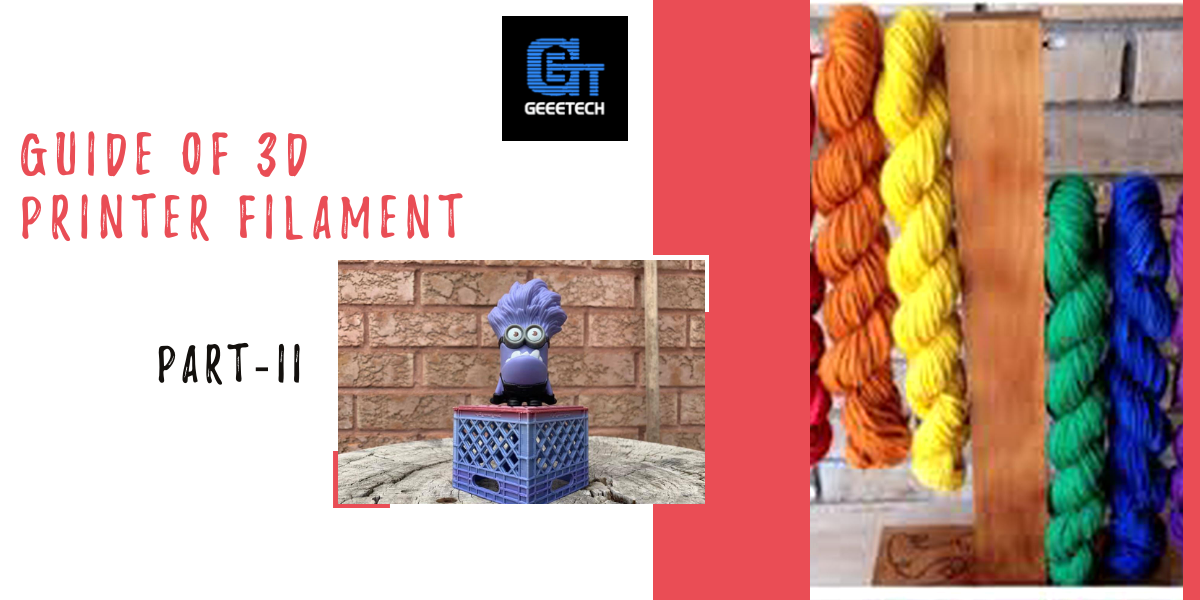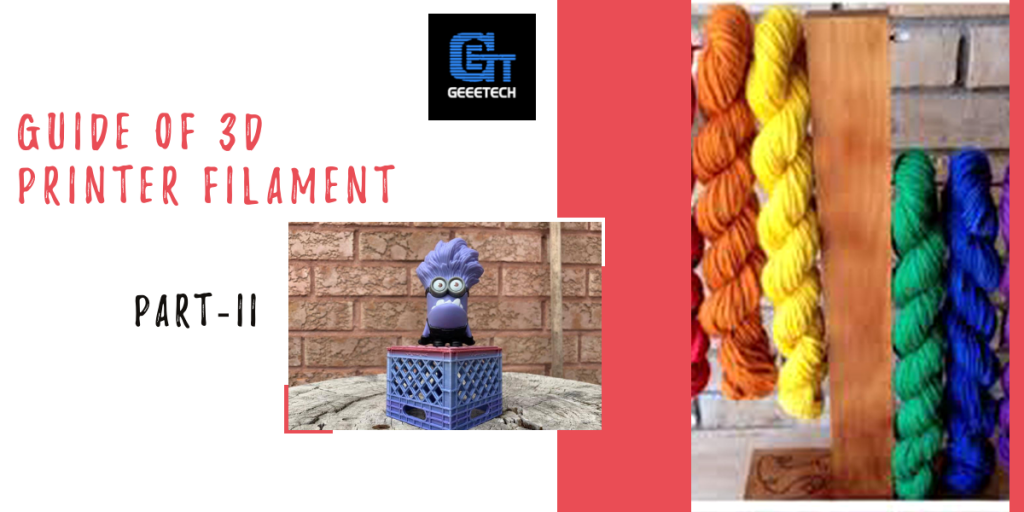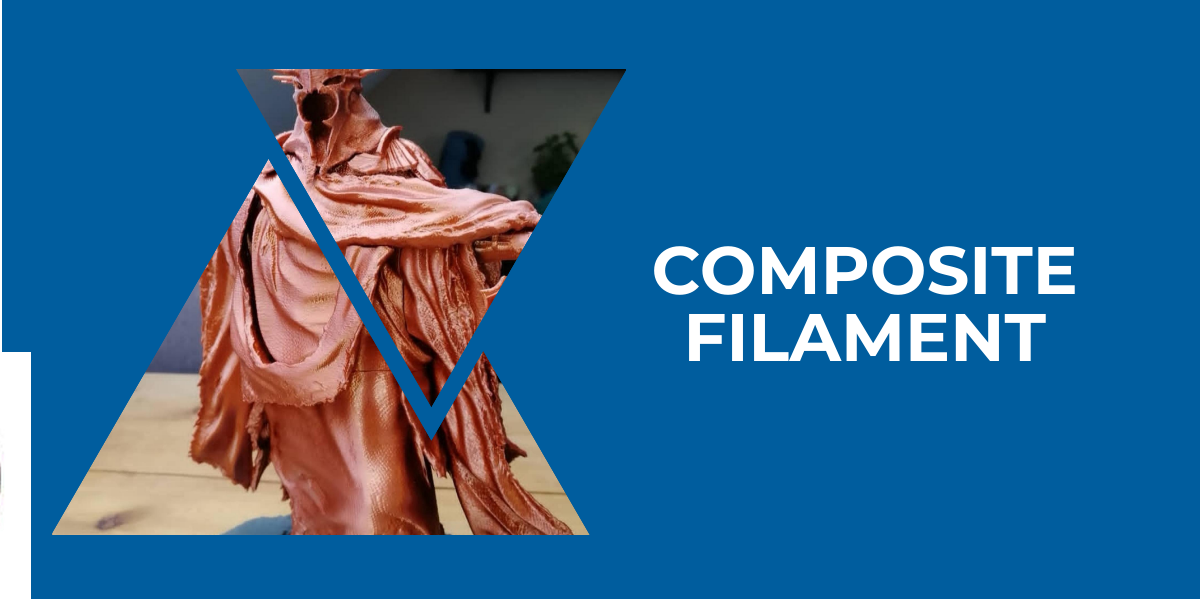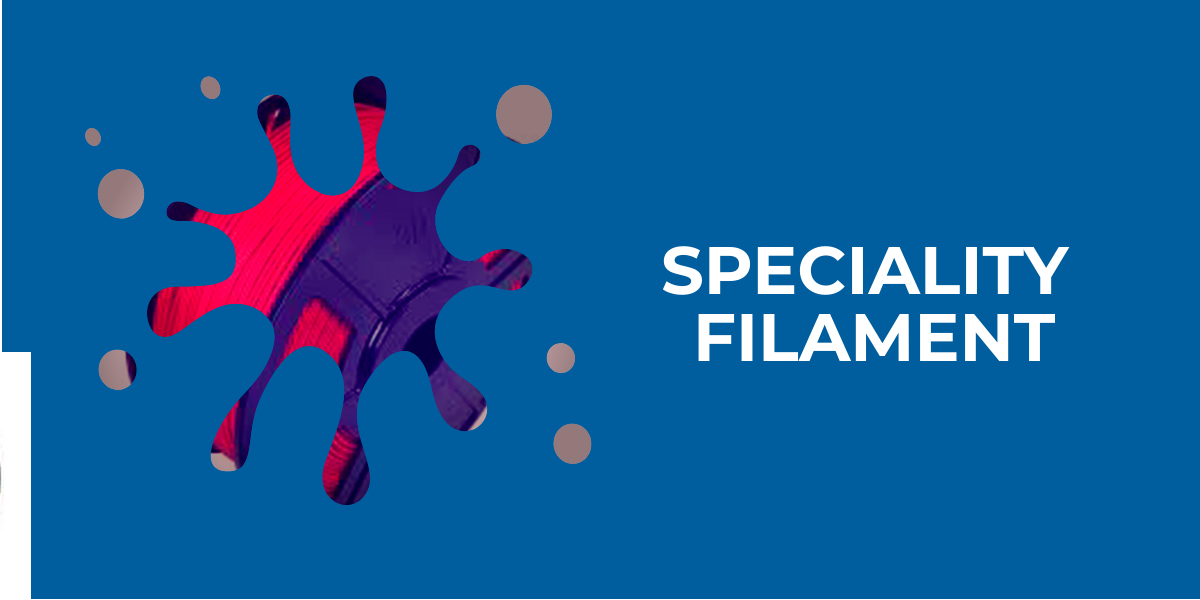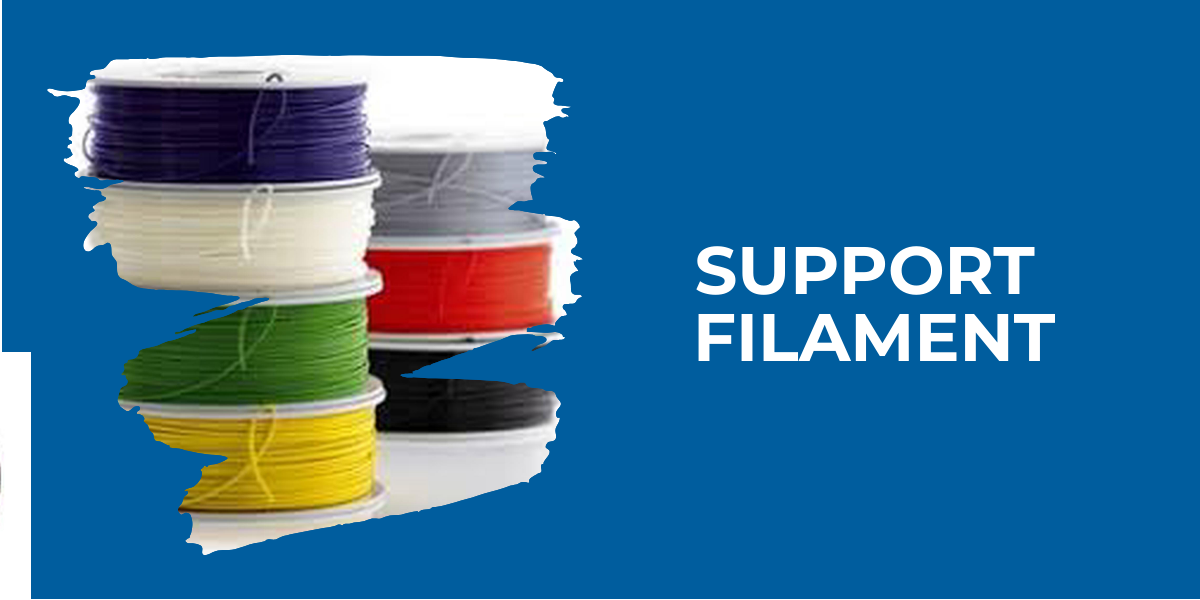Guide To 3D Printer Filament PART-II
In the previous guide to 3D printing, you came across the importance of 3d printer filaments, what is 3D filament made of? list of 3D printer filaments and in-depth knowledge related to Standard filaments. Therefore, various types of standard filaments, its applications, advantages, and disadvantages, extrusion temperature, and pricing. Now in this guide, you will be learning about remaining 3D printer filaments and its categories. Above all, here you will learn about Flexible, Composite, Specialty, and Support 3D printer filaments.
Flexible filaments
As the name indicates these more flexible than any other filaments. Due to flexibility these are soft and can be molded into any shape and size with ease.
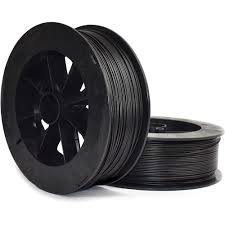
Pro Series Flex
The filament is the one among TPE which is popular for its elasticity and flexibility and behaves like a real rubber which can bend and mold in any shape and size easily. Therefore, these are made of tightest tolerance with high precision for3D printing. The filament can be best experienced with slower print speeds to avoid filament binding in the extruder.
Buy Now
Advantages/properties
- The filament is like a soft rubber making it more flexible and elastic than the popular PLA and ABS filaments
- The filament is good for high-quality objects with large objects because it bonds well between layers
- The heated bed is not needed and it is a durable material with little shrinkage while cooling.
Disadvantages/Issues
- The printer should be modified otherwise can extrude from the nozzle inconsistency due to its flexible property.
- Hence, needs experienced hands for printing the filament is not for beginners
- For optimal performance the printer nozzle needs fine-tuning.
Applications
- Stoppers, belts, caps, phone cases, bumpers and more can be made from this filament due to its 2 important properties.
- The filament can be used in various fields due to its flexible nature i.e., home appliances, automotive, medical, electrical insulation, weather seals for windows and doors, Kid’s toys and wearable’s and soles of the footwear.
Price Starting from : $30 to $ 50 for 1.75mm/1kg spool
Extrusion Temperature: Vary between 220 to 230 °C.
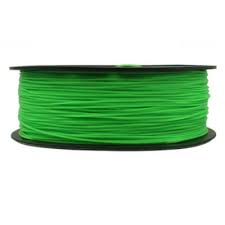
TPE
This filament is well-know for its flexibility and elasticity. Also helpful in the making of extremely flexible 3D printer material that will have the properties of soft rubber. As the name the Thermoplastic elastomers the filament is superbly flexible and elastic. The less infill you use, the more flexible your finished print will be.
Buy Now
Advantages/properties
- Great to use with most of the FDM filaments.
- The filament is like a soft rubber making it more flexible and elastic than the popular PLA and ABS filaments,
- Good for high-quality objects(bonds well between layers).
- The heated bed is not needed.
- Hence, it is a durable material with little shrinkage while cooling.
Disadvantages/Issues
- The printer should be modified otherwise can extrude from the nozzle inconsistency due to its flexible property.
- Hence, needs experienced hands for printing the filament is not for beginners
- For optimal performance the printer nozzle needs fine-tuning.
Applications
- Stoppers, belts, caps, phone cases, bumpers and more can be made from this filament due to its 2 important properties.
- The filament can be used in various fields due to its flexible nature i.e., home appliances, automotive, medical, electrical insulation, weather seals for windows and doors, Kid’s toys and wearable’s and soles of the footwear.
Price Starting from : $30 to $ 50 for 1.75mm/1kg spool
Extrusion Temperature: Vary between 225 to 235 °C.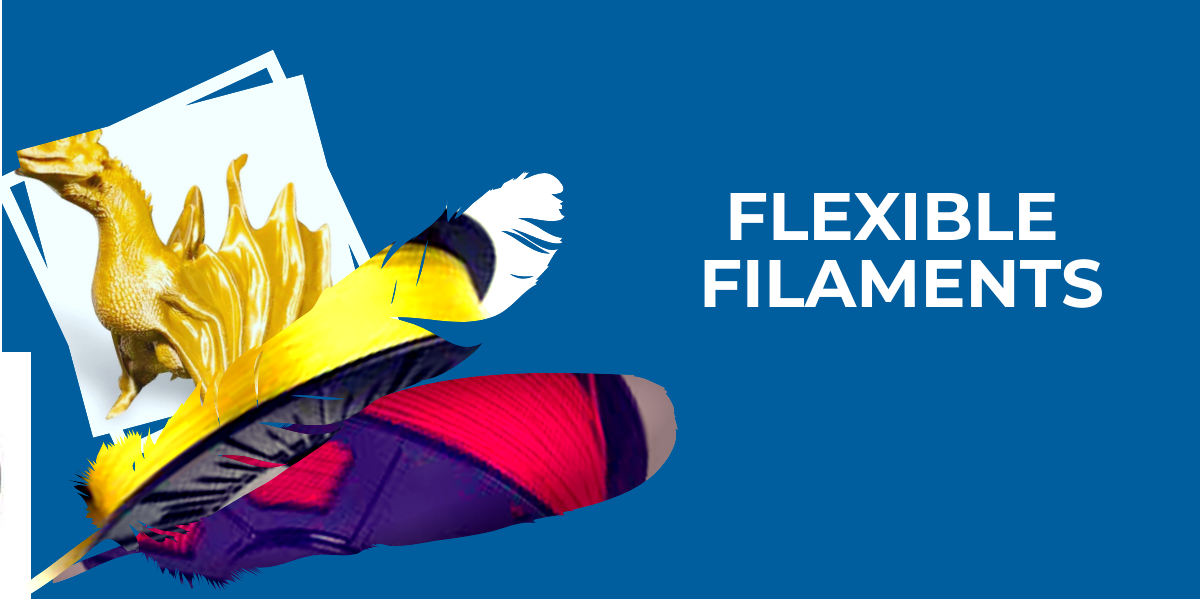
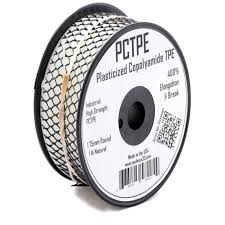
PCTPE
Plasticized Copolyamide TPE is the combination of synthetic polymer Nylon and flexible filament TPE. Due to the mixture of these 2 filaments the properties and settings are almost the same. Synthetic fabrics are used to dye your prints of any color.
Advantages/properties
- Nylon makes it easy to print.
- Flexible like TPE and can be dyed into any color due to Nylon.
- Can work better in critical setup
- Low shrinkage
Disadvantages/Issues
- The filament needs to be dyed in various colors that require an extra step, consumes more time and highly expensive.
- Difficult to print needs experienced hands.
- While printing may lead to blobs and stringing
- Not good with Bowden extruders
- Poor bridging characteristics
Applications
- The main applications are, helps in printing cosplay armor, phone enclosures, and industrial parts.
Price Starting from : $30 for 1.75mm/1kg spool
Extrusion Temperature: Vary between 235 to 245 °C.
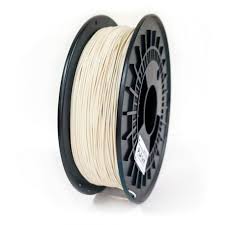
Soft PLA
The Soft PLA has similar characteristics as that of normal PLA with one unique property that is flexible like rubber. Due to this it is also, called “Flexible PLA“. Hence, it is compatible with all the 3D printers.
Buy Now
Advantages/properties
- Soft PLA is flexible, rubbery, elastic and has impact resistance.
- Hence, it acts like a biodegradable PLA due to its low carbon footprints.
- Therefore, it has good vibration dampening characteristics.
Disadvantages/Issues
- It creates clogging, bubbling, and bunching in the nozzle while printing.
- Can’t shape in the desired form due to extremely adhesive nature.
- Hence, need to slow down the printing speed for best results
- A direct extruder is required for the smooth journey of the filament to the bed.
- Not good for objects with more gaps and overhangs.
Applications
- Best for stoppers, belts, caps, phone cases, bumpers and more.
- Unique ergonomic nature helps in printing pen grips, shoe sole inserts.
- The materials which need to be strong such has tires, cell phone covers, and other things with flexible in nature.
Price Starting from : $30 for 1.75mm/1kg spool
Extrusion Temperature: Vary between 220 to 230°C.
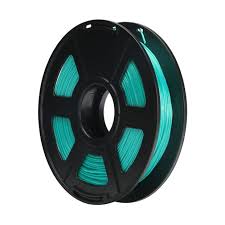
TPU
Thermoplastic Polyurethane is the filament that belongs to the class of polyurethane that has unique properties namely elasticity, transparency, and resistance to grease, oil, and abrasion with a shore hardness of 95A. There are various types of TPU namely polyester TPU used to resist oil and hydrocarbons, polyether TPU used in wet environments, and polycaprolactone TPU performs with low-temperature and comparatively more resistant to hydrolysis.
Buy Now
Advantages/properties
- Resistant to oil, grease, and abrasion.
- Printed parts have low-temperature resistants
- Ease to work
- With the right settings, there will be no curling or delamination.
- Excellent layer to layer adhesion.
- No warping issues.
Disadvantages/Issues
- It creates clogging, bubbling, and bunching in the nozzle while printing.
- A well-polished and smooth look can’t be obtained.
- We need to slow down the printing speed for the results.
- Hence, it doesn’t dissolve in simple chemicals.
Applications
- Best for stoppers, belts, caps, phone cases, bumpers and more.
- Used in automotive instrument panels, caster wheels, power tools, sporting goods, medical devices, drive belts, footwear, inflatable rafts, and a variety of extruded film, sheet, and profile applications.
- The materials which need to be strong such has cell phone covers and other things with flexible in nature.
- Therefore, it helps in the outer casing of antennas for efficient performance even after many wash cycles.
Price Starting from : $30 for 1.75mm/1kg spool
Extrusion Temperature: Vary between 220 to 250°C.
Composite filaments
These are the filaments made up of 2 or more individual components whose combined physical strength exceeds their individual properties as per the name.
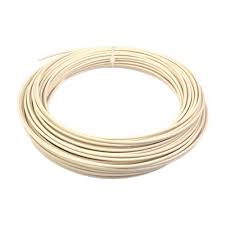
Laybrick
Lay-Brick is the 3D material that almost as similar features as LAYWOOD-D3, Kai Parthy is the inventor of these 2 filaments which are quite amazing, the filament is rough apart from that gives a look and feel of grey stone retaining the flexibility and elasticity of the plastic. The filament should be used with maxi-sized 3D printers. Therefore, it gives the ” Non-plastic look“. The temperature above 210°C the filament produces rough and sandstone result otherwise it will produce a smoother finish.
Buy Now
Advantages/properties
- The filament is stiff and brittle in nature
- Gives sandstone look rather than plastic
- No warping
- No heated bed required
- Get a different variety of textures depending on the extruder temperature.
Disadvantages/Issues
- Temperature above 210 makes the print rough.
Applications
- Best for landscape and architectural designs.
- Fux-stone, model train scenery can be printed with this filament.
Price Starting from : $40 for 1.75mm/1kg spool
Extrusion Temperature: Vary between 165 to 190°C.
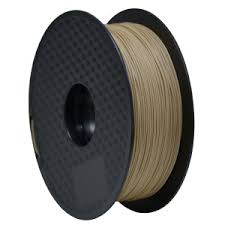
Wooden PLA
The wood filament is a fusion of standard PLA and finely powered wood materials that provide the print with the natural texture of wood. The mixture may contain bamboo, cork, wood dust, and other wooden by-products, come in the ratio of 70:30 of PLA and wood. Therefore, best used with desktop 3D printers that provide the wooden-like finish. They are various types of wood filaments namely LAYWOO-D3, ColorFabb’s Woodfill series, and Timberfill.
Buy Now
Advantages/properties
- The natural look of wood and a biodegradable filament
- Similar PLA properties
- Different extruder temperature provide different colors, hotter the darker
- No warp and shrink
- Less abrasive compared to other composite filaments.
- Therefore, as pleasant wood-like smell.
Disadvantages/Issues
- Less strength than natural wood.
- Hence, it is inflexible and brittle makes PLA better filament
- Easily breakable material
- There should not be any sharp turns while working with the filament.
Applications
- Best for landscape and architectural designs.
- Fux-stone, model train scenery can be printed with this filament.
- Wood burns when exposed to high temperature
- Filaments are more expensive than PLA
- Use large-sized nozzles to reduce wear and tear.
Price Starting from : $25 for 1.75mm/1kg spool
Extrusion Temperature: Vary between 220 to 250°C.
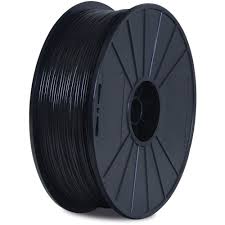
Conductive filament
The filament is modified PLA with a conductive carbon particulate with low voltage and low current circuitry not being that technical. The filament helps in making smaller circuit boards on the printer bed. These filaments may consist of sensors and some LEDs( Light-emitting diode). The filament is present for both PLA and ABS users. As the name, it has a conductive nature. Hence, works well with all the 3D printers.
Advantages/properties
- More flexible than the PLA
- Conductive in nature with small power circuitry.
- No heated bed is required but gives better results with it.
Disadvantages/Issues
- As less layer adhesion
- The filament is more expensive
- Less flexible and durable compared to PLA
- Repeated binding may break the material and shrinks during cooling.
Applications
- Most of its applications may come in the field of electronics i.e., small circuit boards.
- Best for functional prototypes, integrated circuits and electronic components like sensors, LED, and low voltage projects
- Best for Arduino projects.
Price Starting from : $17.99 for 1.75mm/1kg spool
Extrusion Temperature: Vary between 215 to 230°C.
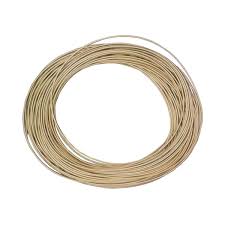
Lay ceramic
As the name gives ceramic or clay finish to the print. The filament has similar properties that of the natural clay when burned and glazed provides strength and gives the elegant look to the object. While using this filament requires extra settings or additional upgrades to the printer for a better print.
Advantages/properties
- The filament is durable and brittle in its nature
- Can be fired in the kiln to get that ceramic look and can apply glaze
- The Kiln can take the filament to make more amazing objects
Disadvantages/Issues
- Takes more time to heat and cool
- The printed objects are hard in nature
- More expensive
Applications
- Therefore, best used for making mugs, flower pots, model roofing tiles, ashtrays, sculptures, or pottery.
Price Starting from : $200 for 3.mm/1kg
Extrusion Temperature: Vary between 265 to 275°C.
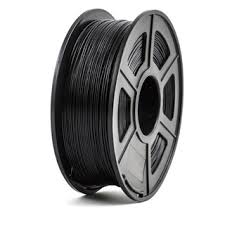
Carbon Fiber Reinforced PLA
As the name, the filament is a mixture of PLA and small carbon fiber strands, designed to fit through the nozzle easily. The carbon contained in the filament provides more rigidity and enhances the structural support to the object to be printed. The 3D printer user who requires stiff and rocky like nature of the objects can use this filament. Drone builders and RC Hobbyists may fall in love with this filament.
Advantages/properties
- No warp and excellent layer adhesion property
- Provides better print quality and no heated bed is required
- High strength, durable, ductile and stiff
- Little string during the cooling process
Disadvantages/Issues
- Not flexible in nature
- Contains abrasive strands
- Wear and tear of printer nozzles more with brass
- Requires investment in a printer nozzle
Applications
- Drone bodies, propellers, and RC car frames can be made with great ease.
- Frames, supports, and tools can also be made,
- Various materials like protective casing, mechanical parts, and highly durable objects can be formed.
Price Starting from : $60 for 1.75mm/1kg
Extrusion Temperature: Vary between 190 to 230°C.

ColorFabb BrassFill, CopperFill, and BronzeFill
The filament is metal combined with PLA gives absolutely the metal finish look. Therefore, these are tougher to print than MH build PLA filaments, due to metal integrated with plastic prints are heavier but are more authentic in nature. The objects printed can be polished, painted, and sanded that gives a beautiful, unique and elegant look even unpolished objects are classy, matte, with a dull appearance and dusky look amaze people. Therefore, what’s in your mind that can be a desired outcome when polished. The temperature can reach to 14oo °C or above.
Advantages/properties
- An aesthetically appealing metal finish.
- Therefore, no heated bed is required.
- Heavier than other filaments due to its metallic nature.
- High durable and strength
- Hence, no, shrink while cooling
Disadvantages/Issues
- Expensive filament
- Therefore, require a wear-resistant nozzle
- Printed parts are very brittle in nature.
- Very poor overhangs and bridging property.
- Over-time partial clogging can be seen.
- Heavy objects when printed with it.
- To obtain a smooth finish need to rock tumbling, polishing, or wet sanding needs to be done.
Applications
- Used for cosmetic prints of busts, jewelry, or sculptures.
- Perfect for printing props, costumes, figurines, and robots.
- The filament can also be used by designers as well other than hobbyists looking to make faux metal prints.
- Replicas for Museums
- Best for hardware products.
Price Starting from : $25 to 50 for 1.75mm/1kg
Extrusion Temperature: Vary between 190 to 220°C.

Proto-Pasta Stainless Steel and ColorFabb SteelFill
The filament is a mixture of the steel strands and PLA, thus these are tougher than the MH build filament. Even these can be sanded and painted to get a better look like the above filaments even with an unpolished look the prints get the cast metal from the mold. Therefore, it has high abrasion to brass nozzle you will need to install a hardened steel nozzle before printing. They print like PLA but slower than PLA.
Advantages/properties
- An aesthetically appealing steel finish.
- Therefore, no heated bed is required.
- Heavier than other filaments due to its metallic nature.
- High durable and strength
- Hence, no, shrink while cooling
Disadvantages/Issues
- Expensive filament
- Printed parts are very brittle in nature.
- Very poor overhangs and bridging property.
- Over-time partial clogging can be seen.
- Heavy objects when printed with it.
- To obtain a smooth finish need to rock tumbling, polishing, or wet sanding needs to be done.
- Not easy to print with for the inexperienced
Applications
- Used for cosmetic prints of busts, jewelry, or sculptures.
- Perfect for printing props, costumes, figurines, and robots.
- The filament can also be used by designers as well other than hobbyists looking to make faux metal prints.
- Replicas for Museums
Price Starting from : $25 to 50 for 1.75mm/1kg
Extrusion Temperature: Vary between 200 to 220°C.
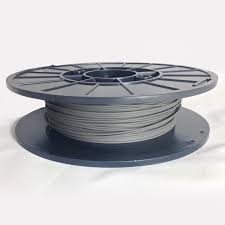
Magnetic Iron PLA
As the name, it has all the magnetic properties as that of the magnet. The filament is a mixture of standard filaments and iron powered due to which magnetics stick to the filament and provide a dusty and gunmetal look to the printed objects. The temperature needs to be 10-20 degrees lesser than what is required for the MH build PLA filament. To get a rusty look you need to spray several times the mixture of hydrogen peroxide of 16oz, the vinegar of 20oz and 1Tbs of salt let it dry and you will get the desired look.
Advantages/properties
- It provides a rusty and worn look to any print.
- Therefore, no, shrink while cooling
- Extremely durable and has great strength
- The filament is not soluble in nature.
- Hard and heavy prints can be achieved.
Disadvantages/Issues
- Expensive filament
- Due to high abrasion needs to install hardened steel nozzle.
- Heavy objects when printed with it.
- To obtain a smooth finish need to rock tumbling, polishing, or wet sanding needs to be done.
- Hence, not easy to print with it for inexperienced
Applications
- Used for cosmetic prints of busts, accessories, or aged-metal props.
- Therefore, best used for various DIY projects, sensors, and educational tools, etc.
- Home uses it is just like a novelty material.
Price Starting from : $70 for 1.75mm/1kg
Extrusion Temperature: Vary between 195 to 220°C.
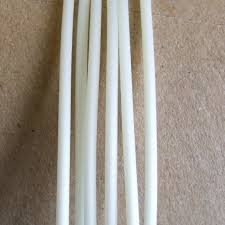
PORO-LAY Series
The filament is made from a rubber-elastomeric polymer and a PVA-component. Therefore, there are various types of filaments namely Lay-Felt, Gel-Lay, and Lay-Fomm 40 and 60. These filaments can be characterized as highly porous and flexible filaments.
Advantages/properties
- These filaments are highly flexible and porous in nature
- Also, have a sponge, jelly, foamy and soft in nature.
- When soaked in water dissolves PVA material and left with the rubber-elastomer.
- Unique and experimental uses.
- Lightweight objects even they are large in size.
Disadvantages/Issues
- Printed objects will be soft and sponge in nature.
- Not used for hard and stiff prints
- Hardware components can not be printed
- Expensive filament.
Applications
- Therefore, best used in filters, permeable membranes, jellyfish models, stamps, or intricate sponges depending on the material.
- Can be used in making of artificial paper and future cloths
- Used for the rubber-like, sponge in nature applications such as ink-reservoirs, bio-cells, micro-foam, and elastics.
- Also used for tissue and orientated objects making.
Price Starting from : $160 for 1.75mm/1kg
Extrusion Temperature: Vary between 220 to 230°C.
Specialty filaments
Like the name, these are special kinds of filaments. Now let’s look at the various types of specialty filaments and their special features.
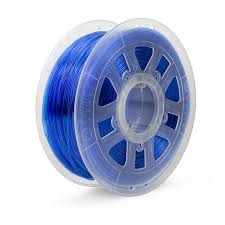
Polycarbonate(PC)
The filament is more strong, impact and highly resistant in nature. Polycarbonate is a tough and highly durable thermoplastic.
Advantages/properties
- Hence, very resistant to any temperature
- It is flexible and can bend without crack
- Transparent in nature
- No soluble
Disadvantages/Issues
- Should store in a dry place
- Above all not for food components
- Expensive than standard filaments.
Applications
- Most commonly used in RC parts or drone parts.
- Therefore, it can be used in applications related to electrical, mechanical, or automotive components.
- Due to its optical clarity can be used in lighting projects or for screens.
Price Starting from : $120 for 1.75mm/1kg
Extrusion Temperature: Vary between 210 to 290°C.
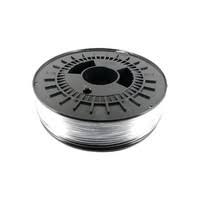
Bendlay
The filament as exciting new features and that is extremely translucent and flexible in nature. Hence, 91% of light passes through the filament. Therefore, it is also flexible and elastic. The other modified version of it is Butadiene.
Advantages/properties
- Flexible, transparent and provides strength to the material.
- Absorbs less water compared to ABS
- Food safe
- High interlayer adhesion
- Less warping
- Unbreakable and easy to print
Disadvantages/Issues
- Acetone will make it crushy.
- Suffer from whitening when bend.
- Harder than ABS
Applications
- Best used in food packing and food industry.
- Best used ornate cups, containers, or translucent objects.
- Therefore, it can also be used in medical devices.
- Hence, it can be used in the making of containers and utensils.
Price Starting from : $100 for 1.75mm/1kg
Extrusion Temperature: Vary between 225 to 245°C.
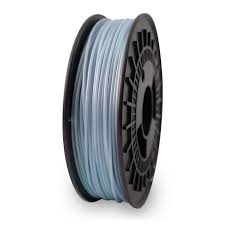
Moldlay
As the name, it is mainly used for molding which as wax-like properties. The filament is stiff and rigid at the room temperature when heated with 170 10 180 degrees starts to extrude. The prints can be made not only for permanent mold but also for lost wax molding purposes. Therefore print takes the long process usually in the traditional form but thanks to Moldlay it consumes time.
Advantages/properties
- No warping
- No heated bed required
- Easy to print
- Inexpensive to print the objects
Disadvantages/Issues
- Softer than any other filament
- Feed gear may not work
- Melted wax is runny in nature so won’t deposit correctly
Applications
- Therefore, it can be used for molding purpose
- Designed for silicone molding or completely vaporizing for investment casting.
Price Starting from : $80 for 1.75mm/1kg
Extrusion Temperature: Vary between 175 to 195°C.
Continuous Fiber
Continuous fiber filaments are designed for the ready to use products other than most 3D printing materials are meant for rapid prototyping and testing models.
Advantages/properties
- Strong, durable and ready to take abuse.
- When comes in contact with a strong base filament like Nylon with Continuous fiber provide a professional and beautiful finish
Applications
- Best used for production parts, drone bodies, or even manufacturing molds.
Price Starting from : $50 to $100 for 1.75mm/1kg
Extrusion Temperature: Vary between 245 to 265°C.
Support filaments
These filaments are water-soluble and also act as support filaments with other filaments while using dual extruders. Support filaments are necessary to obtain the best prints or prefect without any overhangs.
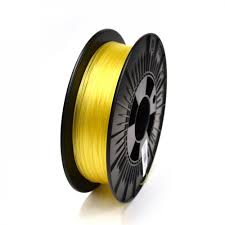
PVA filament
The filament is a well-known support material when printing with ABS or PLA filament. The full name of PVA filament is Polyvinyl Alcohol. The filament is transparent with slightly yellow in color and most often used with dual extrusion printers one with the primary material and on the other hand, this dissolve filament provides support to avoid overhangs.
Advantages/properties
- Acts as a support material
- Biodegradable, durable and non-toxic
- Water-soluble
- Best with PLA due to similar heating temperatures
- Difficult printing makes easy
Disadvantages/Issues
- Dissolves in water easily
- Should be kept in a dry place
- Expensive material than other filaments.
Applications
- Best used for models with internal supports or supports for incredibly detailed models with many overhangs.
- It can be used in thickener in paper adhesives, in personal hygiene products, as a mold-release agent, kid’s putty, and freshwater fishing products.
Price Starting from : $80 for 1.75mm/1kg
Extrusion Temperature: Vary between 190 to 220°C.
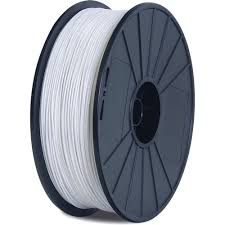
HIPS
High Impact Polystyrene is similar to ABS and best support material. It is bright, white and biodegradable in nature. It also acts as secondary as that of PVA and liquid hydrocarbon dissolves the filament as soon as possible. The filament is well dissolved in limonene.
Advantages/properties
- Acts as a support material
- Biodegradable, durable and non-toxic
- Best with ABS
Disadvantages/Issues
- A heated bed is required without it difficult to print.
- Common issue while printing is curling and adhesion.
Applications
- Used for models with internal supports or supports for models with many overhangs.
- The food industry uses for packing, medicinal trays, signs, all kinds of kid’s toys, and much more.
- The filament can be manipulated in many ways as required.
Price Starting from : $25 for 1.75mm/1kg
Extrusion Temperature: Vary between 220 to 250°C.
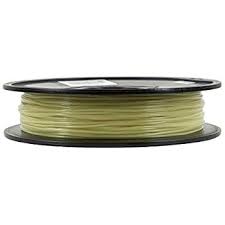
LAYaPVA
The filament is a support material that quickly dissolves in water. And as best viscosity when heated at a temperature of 230-degrees. Of the LAY-AWAY Support Series, LAYaPVA dissolves the fastest.
Advantages/properties
- Therefore, it is stiff and water-soluble
- Act as support material
- Dissolves quicker than normal PVA
Disadvantages/Issues
- Dissolves in water easily
- Should be kept in a dry place
- Expensive material than other filaments
Applications
- Therefore, best used for models with internal supports or supports for incredibly detailed models with many overhangs.
Price Starting from : $160 for 1.75mm/1kg
Extrusion Temperature: Vary between 220 to 250°C.
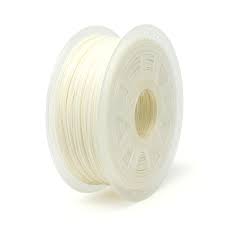
LAY-CLOUD
Hence, the best support material for flexible filaments and when overexposed to water it becomes gelly and soft. Therefore, when heated with a 240-degree temperature to achieve the best viscosity.
Advantages/properties
- The filament is stiff and water-soluble
- Therefore, act as the best support material for flexible filaments.
Disadvantages/Issues
- Hence, dissolves in water easily
- Should be kept in a dry place
- Therefore, expensive material than other filaments
Applications
- Therefore, best used for models with internal supports or supports for incredibly detailed models with many overhangs.
This guide to 3D Printing is about the remaining filaments which were left in the previous guide. Hence, it is all about the guide to 3D printer filaments. There is one more upcoming part of this that will help you choose better.
